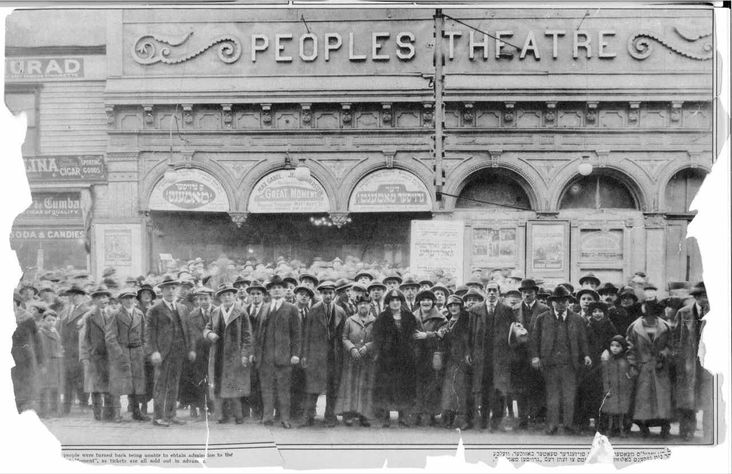This is the Forward’s coverage of the Yiddish language historically spoken by Ashkenazi Jews in Europe and still spoken by many Hasidic Jews today.
For more stories on Yiddishkeit, see Yiddish World, and for stories written in Yiddish,…
This is the Forward’s coverage of the Yiddish language historically spoken by Ashkenazi Jews in Europe and still spoken by many Hasidic Jews today.
For more stories on Yiddishkeit, see Yiddish World, and for stories written in Yiddish,…

100 Years Ago There are currently 18 Yiddish theaters in America, and all of them are doing a bang-up business. This is in addition to the numerous Yiddish theater companies that are traveling around the country, performing in many different cities. There are five theaters in New York: Kessler’s, Shevski’s, People’s, Gabel’s and the Grand…

This article originally appeared in the Yiddish Forverts. Once, Odessa was very much a Jewish city. Before World War II, a third of those living in the Ukrainian port city were Jewish. According to the latest census, the Jewish population today is roughly 1%. And yet, during a recent trip to Ukraine, I was surprised…

On Sunday afternoon, January 8, more than 80 people attended a reading and celebration in Washington, D.C., honoring the publication of a new book of translations of 24 stories by the remarkable Yiddish writer Blume Lempel (1907-1999). The event was held at Politics and Prose, a well-known Washington bookstore where President Obama and other Washington…

A version of this article originally appeared in the Forverts. What attitude towards women do we find in Yiddish, and is it fair? One time, several years ago, a number of us were sitting around a table at Yugntruf’s Yidish-vokh retreat, singing songs. Someone brought up the subject of political correctness, and a discussion ensued…

This article originally appeared in the Yiddish Forverts. Nolan Gurfinkiel belonged to the dwindling tribe of Holocaust survivors who used to eat at my parents’ Shabbos table. He was a Schindler Jew, one of about 1,200 Krakow Jews who survived through the good offices of Oskar Schindler, Europe’s most famous Righteous Gentile. Nolan wore dark…

This article originally appeared in the Yiddish Forverts. The Ellis Island National Museum of Immigration has, in its database, more than 8,780 sound recordings from the early 20th century both by and about people considered to be “outsiders” in the United States. Included in that group were immigrants. Now, the Museum is trying to make…

100 Years Ago With only seven senators voting against it, the Burnett anti-immigration bill now has an excellent chance of becoming a law. It is likely that it will pass with a large majority in the House as well. While it’s true that the bill has been amended and is now not as bad is…

The following article originally appeared in the Yiddish Forverts. It was translated from the Yiddish by Meena Viswanath. Dr. Avrom Nowerstern, the long-standing Yiddish teacher and researcher, is the director of Beth Shalom Aleichem in Tel Aviv. He was born in Argentina in 1951 and moved to Israel in 1969. Nowerstern is no newcomer to…






שבֿע צוקער פֿירט דעם שמועס מיט וויווי לאַקס און ביידע לייענען פֿאָר עטלעכע פֿעליעטאָנען פֿון יענע צײַטן.


100% of profits support our journalism